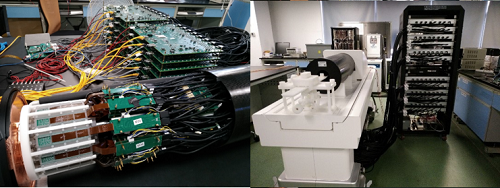“SIAT aPET”: New Small Animal PET Scanner Achieves High Spatial Resolution and High Sensitivity Simultaneously
Date:19-10-2020 | 【Print】 【close】
Positron Emission Tomography (PET) is an important tool for studying the animal model of human diseases and the development of the new drugs and new therapies.
The spatial resolution and sensitivity are two important parameters which affect the quantitative accuracy of PET studies.
A research team led by Dr. YANG Yongfeng, and the co-first authors KUANG Zhonghua, Dr. WANG Xiaohui from the Shenzhen Institutes of Advanced Technology (SIAT) of the Chinese Academy of Sciences developed a small animal PET scanner named "SIAT aPET", the result was published in Physics in Medicine & Biology.
Due to the uncertainty of the depth of interaction of the traditional PET detectors, small animal PET scanner cannot achieve a high spatial resolution and a high sensitivity simultaneously.
In this work, the high resolution depth encoding PET detectors using dual-ended readout of pixeled LYSO array with SiPM arrays were developed and used. The scanner achieved a sensitivity of 16% at the center of field of view and an average spatial resolution of 0.82 mm in a field of view large enough for imaging of the rats. Among all the high spatial resolution and high sensitivity small animal PET scanners developed in the world so far, "SIAT aPET" achieved the highest sensitivity and one of the highest spatial resolutions.
"The scanner has been very stable since more than one year ago. A few animal studies were already performed on the scanner and we are expecting to do more animal scans very soon," said Prof. YANG. "The scanner is also designed to be MRI compatible and recent MRI-PET interference test experiments showed very promising results. With the high performance of the scanner, we believe in improving the quantitative accuracy of the PET studies or reduce the scan time."

Photo of "SIAT aPET" (Image by SIAT)
Media Contact:
ZHANG Xiaomin
Email: xm.zhang@siat.ac.cn